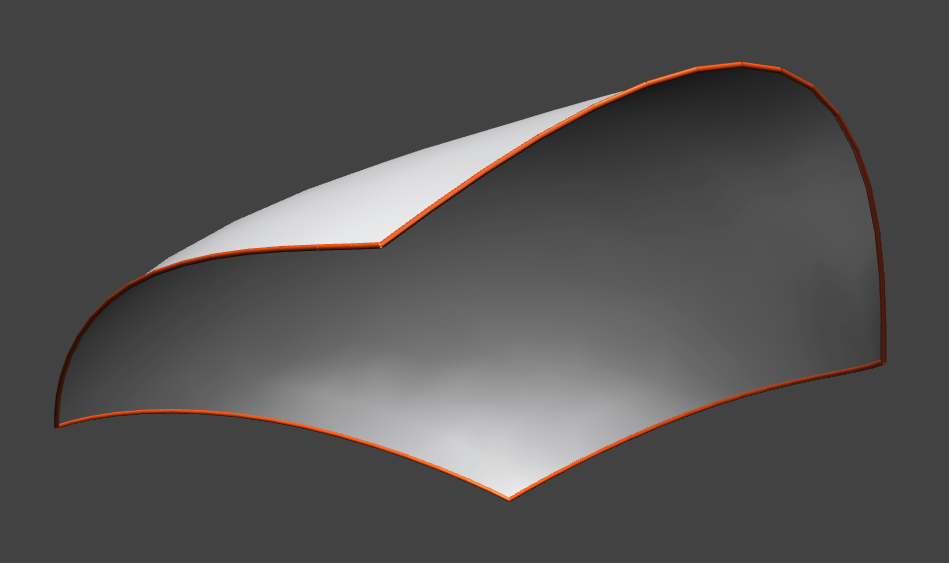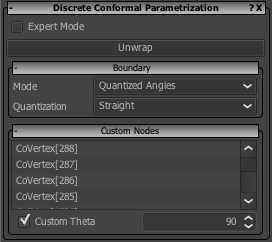 |
| Initial Surface |
A boundary of a discrete surface is usually a closed polygonal curve in space. If a surface has multiple boundary components, one speaks of a multiply-connected surface. In this article we deal with surfaces that have one boundary component. We call those simply-connected or surface with disk topology.
 |
| Source unstructured triangle mesh |
Starting with a discrete surface with one boundary component we want to create a mesh where the pattern of the mesh aligns with the boundary curve in a nice way. You can download the example model
here. We use a triangle pattern and demonstrate the usage of automatic as well as custom alignment of the boundary.
Boundary aligned parameterization
 |
| Custom boundary condtions |
In order to create a new mesh from an existing surface, we first need to create a suitable parameterization for the input data. For general information about parameterization have a look into the
Discrete Surface Parameterization article. In our case we want to create a parameterization that respects the geometry of a regular triangle pattern which means boundary angles of the domain of parameterization should be quantized to a multiple of 30º.
For the given triangulated surface, we create a map from the surface to a rectangle. In order to specify these boundary conditions, you select the four corner vertices of the mesh and type in the desired boundary angle in the "Custom Nodes" fold-out panel inside the "Discrete Conformal Parameterization" panel. If the vertices do not appear, press the Unwrap button and select the vertices again. To create the rectangle, the four vertices must have a custom angle of 90º. The general boundary setting should be set to "Quatized Angles" for the mode, and "Straight" for quantization. These settings affect all unselected vertices. If you press the unwrap button the mapping is calculated and can be previewed using the texture display features of VaryLab.
.png) |
The VaryLab main window during parameterization. In
the parameterization domain panel (top) you see can review the
current domain. A texture is selected from the appearance panel
to preview the mapping.
|
Aligned Remeshing
 |
Remeshing with boundary aligned
triangles |
If we have a mesh with sufficiently quantized boundary angles, we can go on and create a boundary aligned mesh from this data. In our case we have four angles of 90º and at all other vertices the boundary of the domain is a straight line which corresponds to a boundary angle of 180º.
 |
| The remeshing user interface |
To perform the remeshing step select the "Boundary aligned Triangles" pattern from the "Surface Remeshing" panel and hit the "Remesh" button. You can download the result mesh
here.






.png)
No comments:
Post a Comment